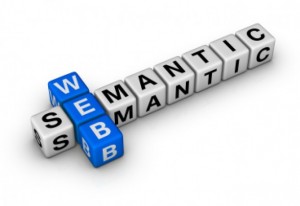 Increasing CTR Through the Use of Semantic Markups
Increasing CTR Through the Use of Semantic Markups
Search marketing is about more than just achieving the highest page ranks for your web pages. Getting ranked on the first page of a Google search isn’t useful if a customer isn’t given a compelling reason to click on your link. This is one of the main reasons that doing semantic markups on your website is important even though they are not a ranking factor with Google.
A semantic markup is the adding of HTML markups to your web pages that give Google clues about the context of its content. In many cases, this takes on the form of rich snippets of text, photos and other information designed to give readers more information about what is on a particular web page and who is responsible for it. While it won’t result in a higher search engine results page (SERP) listing, it can play major dividends for your click-through rate (CTR). The reported increase in click-throughs for results with rich snippets is an average of 15 percent.
For this reason, adding semantic markups to your web is one of the steps that eVisible recommends for our clients. Our website development and consulting services go beyond just achieving better search results and focus on improving your ability to connect with new clients. Semantic markups are a great way to increase your visibility with little extra effort required.
If you are not doing semantic markups on your site, you need to start. Here are four of the most basic types of semantic markups that you should consider implementing right away:
Breadcrumbs
Think of breadcrumbs as a way to let web users quickly navigate your website. Instead of just your home page coming back in a result, end users can see links to very specific landing pages. This can direct them to the areas on your site you are most interested in showing off and cut down the amount of clicks between them and a sale.
Facebook Open Graph
An Open Graph markup allows you to connect your web pages to Facebook’s social graph. This means that you can control how your web page is displayed when a link to it is used on Facebook or other social media sites. You can create a headline specially designed for social media sites and choose which images will be used when your links are shared.
Rating and Review Information
Give potential customers an idea of what other people think about your business by including ratings and review information in the search results. The rich snippet information can also include the number of reviews – a higher number gives people more confidence – price levels and other product-specific information.
VideoObject Schema
People want to know more about videos that you create before they click on a search result to view them. Including a screenshot and some basic information (description, length, etc.) about a video in the search results can enhance CTRs.
